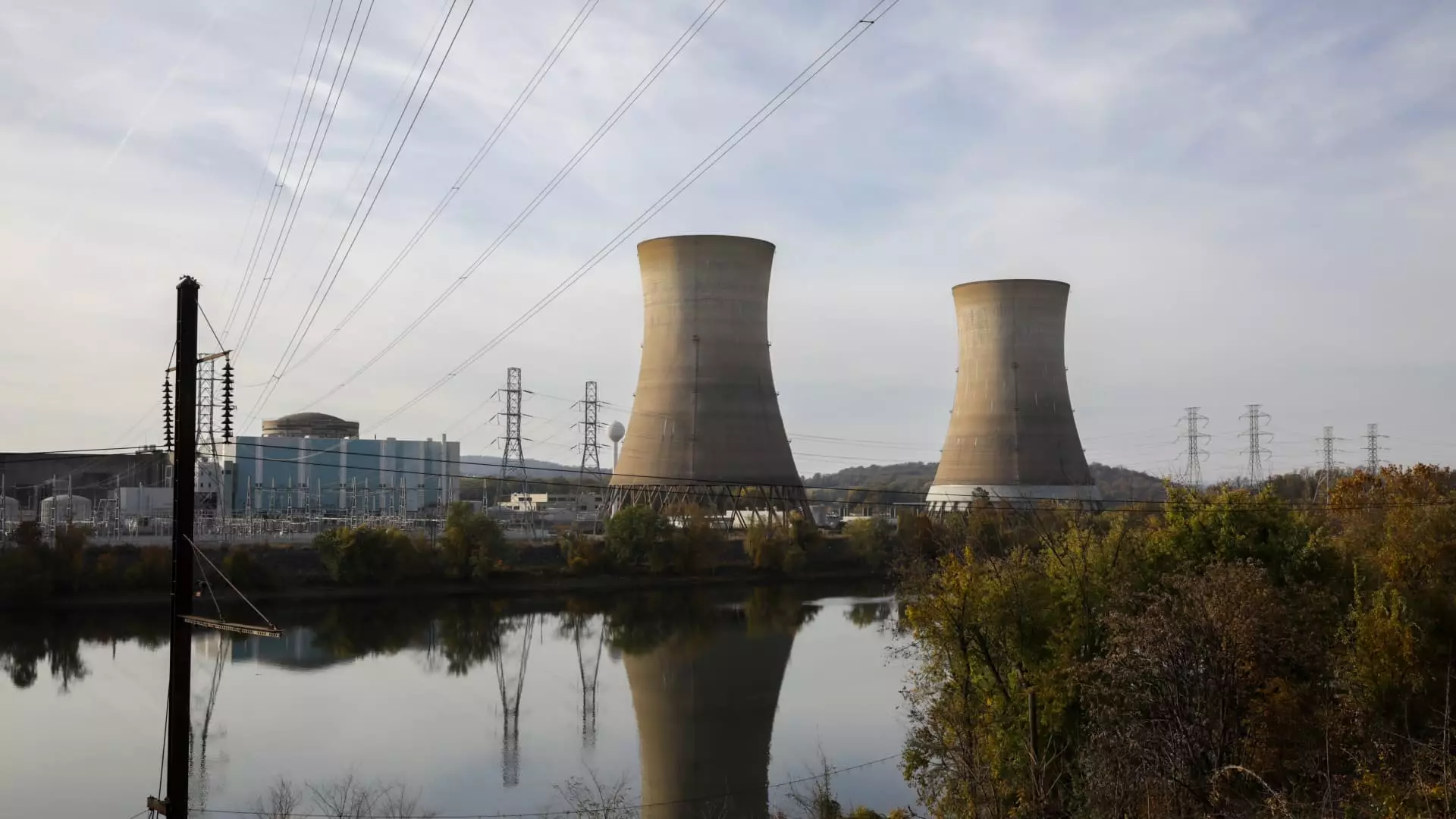The rapid expansion of the artificial intelligence sector has led to significant fluctuations in the stock prices of energy companies closely tied to technology, especially following notable developments in AI capabilities. As concerns about the energy consumption of data centers proliferate, power companies are re-evaluating their strategies and investments, leading to sharp declines in their stock values. The turbulence in stock performance signifies the broader implications of AI developments not only on technology but also on energy markets.
The recent unveiling of China’s DeepSeek open-source AI laboratory has stirred up significant apprehension among investors regarding the energy demands of artificial intelligence applications. This uncertainty was palpable in the stock market on Monday, where major players like Constellation Energy and Vistra saw losses exceeding 16% in early trading sessions. GE Vernova experienced a decline of approximately 18%, while Talen Energy’s stock fell more than 15%. The losses are stark contrasts to the prior gains experienced earlier in the year, showcasing the volatility and unpredictability within both the tech and energy sectors.
Such dramatic shifts can be attributed to investor skepticism surrounding the energy consumption of emerging AI technologies. After the release of DeepSeek’s advanced reasoning model, DeepSeek-R1, which is believed to rival American AI models, investors began reassessing the expected energy needs of these technologies. Concerns intensified when Scale AI’s CEO, Alexandr Wang, articulated that DeepSeek had effectively closed the gap with its American counterparts, suggesting that the competitive landscape is rapidly evolving. As Chinese AI companies make technological advancements, fears regarding the energy requirements necessary to support robust AI developments loom large.
Historically, the burgeoning data center market had led to expectations of increased energy demands, prompting power companies to seek reliable energy sources. Firms like Constellation Energy have been proactive in addressing this challenge, having established agreements to revitalize nuclear power facilities to provide steady and carbon-free energy to meet heightened demand. For instance, Constellation’s deal to restart the Three Mile Island plant in Pennsylvania highlights their commitment to a nuclear future as a solution to energy needs generated by AI data centers.
While companies like Talen Energy align themselves with tech giants such as Amazon to power data centers, Vistra has been selectively considering opportunities despite currently not having a data center partnership. The varying strategies taken by these firms demonstrate the delicate balancing act they must navigate in the face of evolving technology and shifting market dynamics.
The Bank of America analysts have raised critical points regarding the adequacy of electrical grid investments in the United States and Europe. Their assessment indicates that existing structures are under-invested and ill-equipped to meet anticipated load growth resulting from increased reliance on AI energy consumption. This sentiment underscores a fundamental issue facing power companies: the need for significant infrastructure investment to ensure that grid systems can support the anticipated demands.
The analysts’ assertion adds another layer of complexity to the market dynamics, as investors must now consider not just technological competition but also the infrastructure’s capability to sustain growth. The potential shortcomings in the energy supply chain could place additional pressure on energy costs and create challenges for tech companies expecting a seamless integration of AI technologies.
The developments within the AI sector, particularly the emergence of formidable capabilities from organizations like DeepSeek, pose significant challenges for energy companies aligned with technology. With fluctuating stock values reflecting investor apprehension regarding energy consumption and competition, companies are reevaluating their strategies to meet future demands. As they look towards sustainable energy sources like nuclear power and possible collaborations with tech giants, the path ahead remains fraught with uncertainties.
The fabric of the energy market is intertwined with technological advancements, and as AI continues its meteoric rise, power companies must remain agile in the face of changing market dynamics. The need for infrastructure upgrades will become ever more critical, setting the stage for a complex interplay between energy supply, technological demand, and investment strategies in the years to come.

